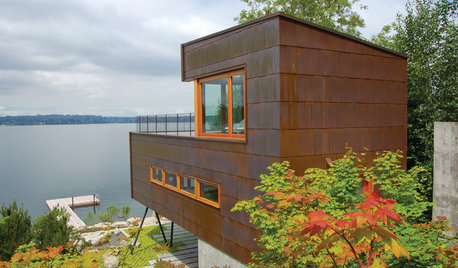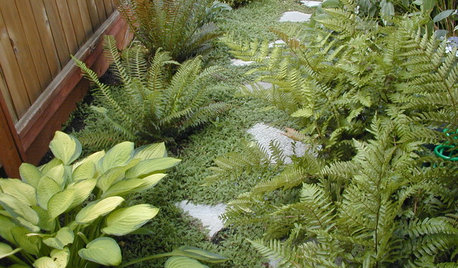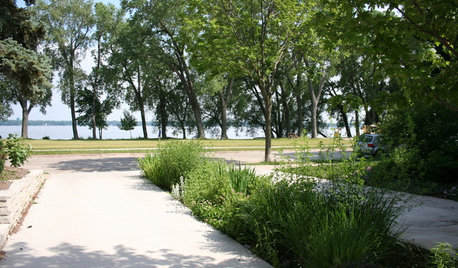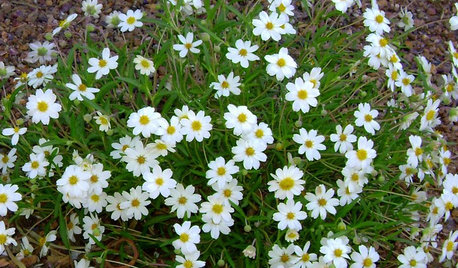Ground Cover Challenge
LivingInOz
20 years ago
Related Stories

LIVING ROOMSRoom of the Day: Dividing a Living Area to Conquer a Space Challenge
A new layout and scaled-down furnishings fill the ground floor of a compact Dublin house with light and personality
Full Story
GUESTHOUSESHouzz Tour: A Lakeside Guesthouse Rises to the Challenge
To keep flat ground for entertaining, the architects of this Mercer Island cabin on a hillside looked upward
Full Story
GARDENING GUIDES6 Dependable Ground Covers for Warm Climates
Swap some lawn for these drought-tolerant clumping plants — and watch your maintenance efforts diminish while they easily grow
Full Story
LANDSCAPE DESIGN6 Great Ways With Garden Ground Covers
Use them as problem solvers, weed killers, color and texture providers ... ground cover plants have both practical and visual appeal
Full Story
GARDENING GUIDESGreat Design Plant: Bugle Weed, a Quick Ground Cover
It’s highly adaptable, suppresses weeds, reduces erosion and provide weeks of bright flowers. Just watch for invasiveness
Full Story
HOUZZ TOURSMy Houzz: Rising to the Renovation Challenge in Toronto
An eye for potential and substantial remodeling lead to a chic and comfortable home for a Canadian family
Full Story
DECORATING GUIDESRoom of the Day: A Family Room That’s Up to the Challenge
An invitation to do a makeover inspires an interior designer to revitalize her family room with bold colors and prints
Full Story
LANDSCAPE DESIGNHow to Design Your Landscape to Sink Water Into the Ground
Learn to infiltrate stormwater, even on challenging sites
Full Story
GARDENING GUIDESGreat Design Plant: Creeping Juniper Holds Its Ground
Add texture and evergreen interest to a layered garden with this low-maintenance, good-looking ground cover
Full Story
GROUND COVERSGreat Design Plant: Blackfoot Daisy for Prettier Dry Ground
Don’t let its delicate looks fool you. This ground cover can survive extreme cold and heat, and with little water to boot
Full StorySponsored






ianna
ScottReil_GD
Related Professionals
Allen Landscape Architects & Landscape Designers · Reading Landscape Architects & Landscape Designers · West Milford Landscape Architects & Landscape Designers · Beavercreek Landscape Architects & Landscape Designers · Saint Louis Park Landscape Architects & Landscape Designers · Salem Landscape Contractors · Tempe Landscape Contractors · Berkley Landscape Contractors · Biloxi Landscape Contractors · Duarte Landscape Contractors · Cheshire Gardeners & Lawn Care · Amesbury Siding & Exteriors · Lenexa Siding & Exteriors · Oregon City Siding & Exteriors · Waukesha Siding & ExteriorsLivingInOzOriginal Author
ScottReil_GD
LivingInOzOriginal Author
ScottReil_GD